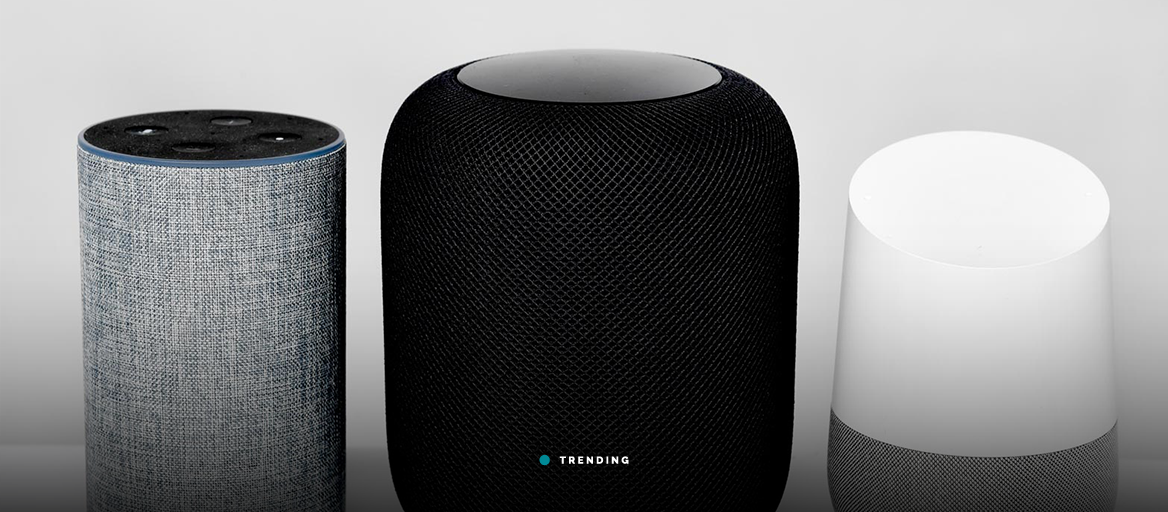
Owning a connected home is one of the hottest trends of 2019 and there is a simple reason for that. This year “fully connected” expanded to “fully automated”,user experience got refined and we now have a true smart home at our fingertips.
This means that setting up your smart home is easier than ever, but choosing the right smart ecosystem to unify your devices and get them talking remains a challenge.
There are two popular options to gel your devices together: On one side you have stable and rigid KNX|Loxone systems that cut your energy bills, save you a lot of time, but are hard to manage. On the other, a booming industry of IoT devices that are simple, connected to the internet, but lack a central control interface. They offer no full-stack solutions that would make you feel like you’re getting a complete smart home, and while they are widely available, the lifespan of those devices remains questionable.
The questions is: Are you willing to sacrifice stability for user experience or the other way around?
The good news is that there is a middle way!
KNX vs. IoT? KNX & IoT!
Apple HomeKit, Google Home and Amazon Alexa have now become major players in the smart home interaction. And it’s not just voice control that makes them the thought leaders of the smart home field. With their central smart home hubs, they make controlling your devices easier and home automation a piece of cake. They offer simple, price-friendly alternatives to KNX|Loxone|Gira actuators that integrate into your home easily. The value of these platforms is already obvious with only a couple of IoT gadgets in place.
Now imagine how this symbiosis empowers KNX|Loxone Smart Home owners with hundreds of devices and practically no alternatives to their management interface. It empowers them to manage their home and adapt it to their lifestyle through different phases of their life.

Comparing Smart Home Platforms
To help you illustrate a clear picture, we have tested and compared the top Assistant Platforms for their usage with KNX|Loxone|Gira Smart Homes.
Here we present an overview that puts IoT integrations, Visualisation, Automations and Hardware Support under the microscope.
1. IoT Integrations
Connect everything into one centralised dashboard, both KNX|Loxone|Gira and Assistant-supported devices. This allows anything from smart locks, cameras, intercoms, AV solutions to blinds, thermostats and switches to respond to your Smart Assistant.
Now let’s look how the integrations compare.

Amazon Alexa is progressively supporting more and more devices and brands, with sensors included. One interesting example is that you can bring Echo buttons into your home, connect them with your KNX/Loxone/Gira base over 1Homr and voilà, you can now reprogram your home push buttons in a drag & drop interface. See a list of all Alexa-enabled device here.
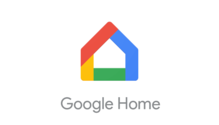
Google Home works well with a plethora of mainstream devicesbut we’re still missing the implementation of sensors.
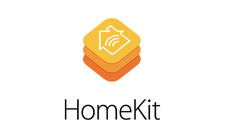
Apple HomeKit offers certified HomeKit smart accessories and allows the usage of different sensors as well as push buttons. Due to a more complex certification process and Apple’s late entry, HomeKit is staying behind in the number of IoT devices being supported. However, they have carefully selected the ones they brought to the platform. For instance, with complete family of EVE sensors being enabled - the only limit for your automation is your imagination. Our team has also noticed, that due to HomeKit running locally, the sensors’ reaction time is noticeably faster than with Alexa.
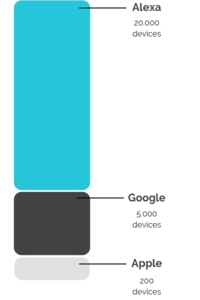
2. Smart Home Apps (Visualisation)
Check the stats and easily manage all your devices in one place.
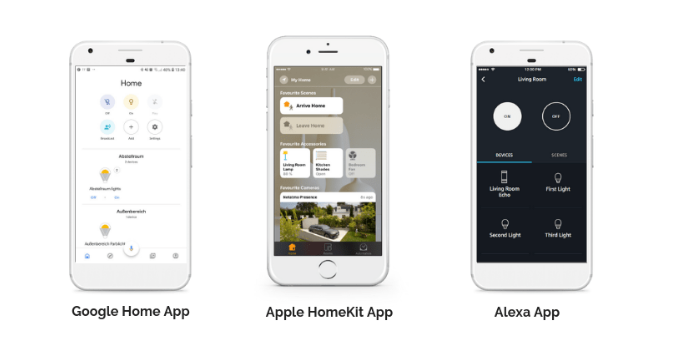

Amazon Alexa App is getting a redesign with “Devices” Tab being one of the biggest improvements. Adding devices to groupsallows you to control them with a keyword e.g. “Turn kitchen lights on!”. Alexa app allows an easy access to Routines from the menu and an unambiguous screen for creating a new Routine.
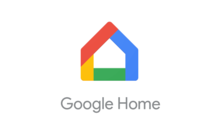
Google is also redesigning their Google Home App with a clean and simple design. It allows you to combine devices into rooms giving you the option to control the whole room by touch or voice. You can get temperature data on all thermostats, however, the app does not yet support sensors. A downside to the app’s simplicity is the unnecessarily complicated creation of routines, and changing settings.
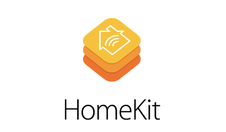
Apple HomeKit allows you to add devices to the Home app by scanning the special code. Home App also has a rooms tab to sort devices into different sections. You can invite other family or friends with an iOS device or Apple ID to join and get access to the Smart Home Accessories. There is even an option to integrate other visualisation apps over the HomeKit platform like Elgato Eve.
Your new all-in-one KNX / Loxone Server.
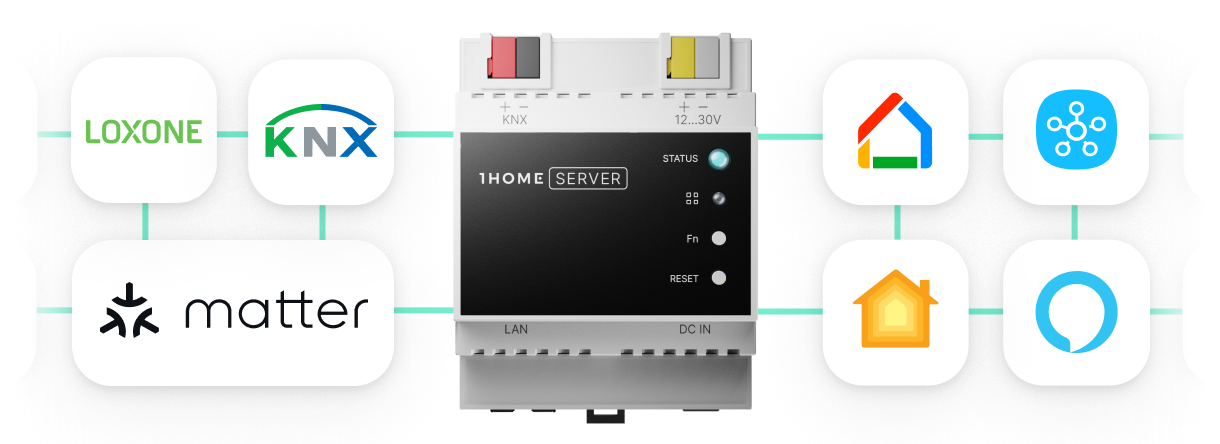
3. Automations and Routines
Automatic rules are an immense improvement to the existing automation of the KNX|Gira|Loxone systems. They enable you to put automatic sequences in motion similar to the IFTTT app, accompanied by a much friendlier user experience.

Amazon Alexa allows routines to be used with sensors ( e.g. when motion is detected in the living room, Alexa can turn on the lights), other device inputs, time & command triggers and offers a few Routines out of the box: Goodnight and Start my day. It doesn’t support location-based triggers though.
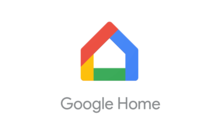
Google Home Routines are hidden under layers and layers of submenus. You can only set a command or time triggered Routine. At this point, Google is only playing catch up with Apple and Amazon.
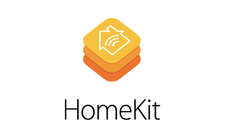
Apple HomeKit offers Routines called “Automations” and shows them on the main dashboard. Automations can be triggered by location, time or by Smart Home devices (sensors included). The platform even supports geofencing from your iOS devices or carOS.
4. Hardware Support
Supporting several hardware devices is a must when you'd like to integrate several IoT devices into your home.
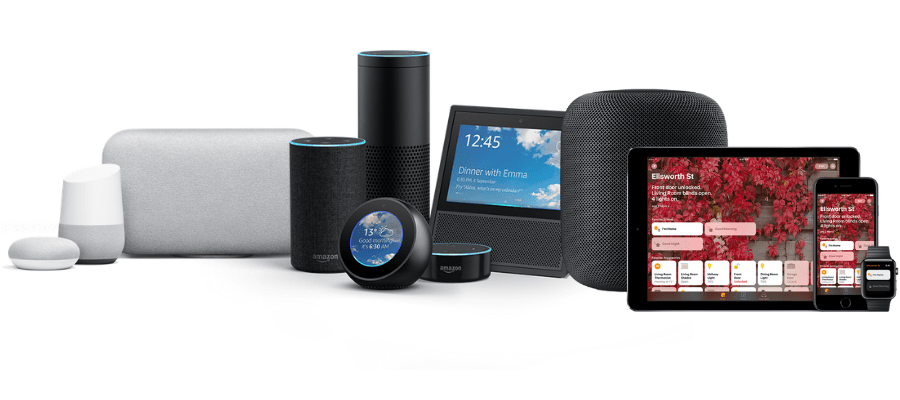

Amazon Alexa has introduced the largest number of Smart Assistant devices of the three (the Smart Display Echo Show, Echo Spot, Amazon Basics Microwave, Echo Input, the Echo Auto, Echo Dot, Alexa Echo, as well as the third party assistants Bose Home Speaker, Harman Kardon Allure and the Sonos One. If you’re looking for Alexa supported TV entertainment, the Fire TV stick, Fire TV Cube or the Sonos Beam Soundbar as well as Toshiba and Insignia Smart TV’s are also available. See a list of all Alexa-enabled device here.
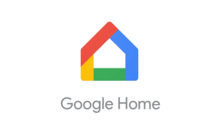
Google Home offers the Google Home, Google Home Max, Google Home Mini and third-party Google Assistant devices (BL Link, Sonos One, Sonos Beam, Nest Cam Iq Indoor). See the list of the best Google-enabled devices here.
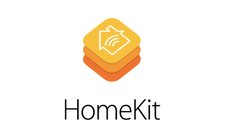
Apple HomeKit offers HomePod, Apple Watch as well as the smart assistant Siri on iDevices, like iPhones, iPads, Apple TV’s/Siri Remotes. However, Apple hasn't added support for any third party hardware.
Final Evaluation
As a conclusion to our research of Smart Assistant Platforms, we can sum up the takeaways into these main points: Amazon Alexa is leading in terms of compatibility with IoT devices while racing with Apple on the best automation dashboard. Apple HomeKit has the upper hand in the visualisation game with the best home management dashboard while it’s lagging behind with the size of its Ecosystem. Alexa is missing a Smart Watch on its list of enabled devices, while Apple is beating both competitors with its fully connected features (geofencing etc.). Google is more or less playing catch up on all fronts, although this could also mean that there are a lot of updates to come in this fight for survival of the smartest.
In any case - Assistant Platforms are a sign of the new era in home management and automation. And admit it, the well-thought-out user experience from the giants of Silicon Valley combined with the German stability is as smart as a Smart Home gets.
Your new all-in-one KNX / Loxone Server.

